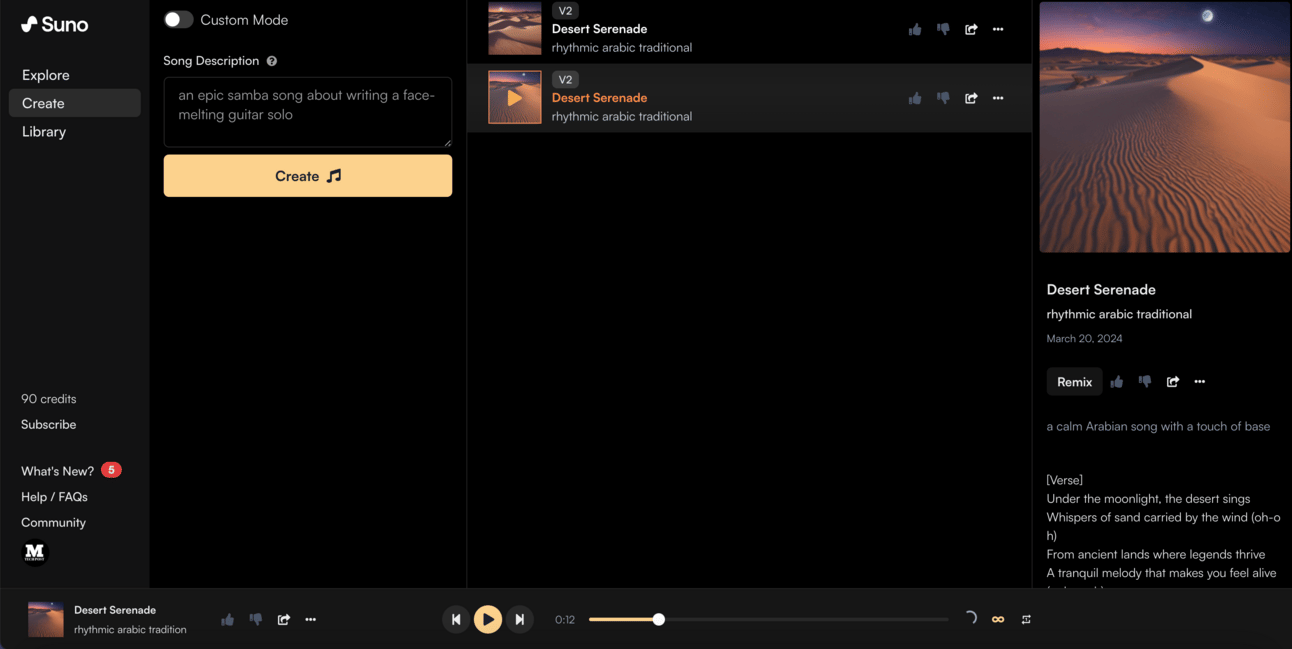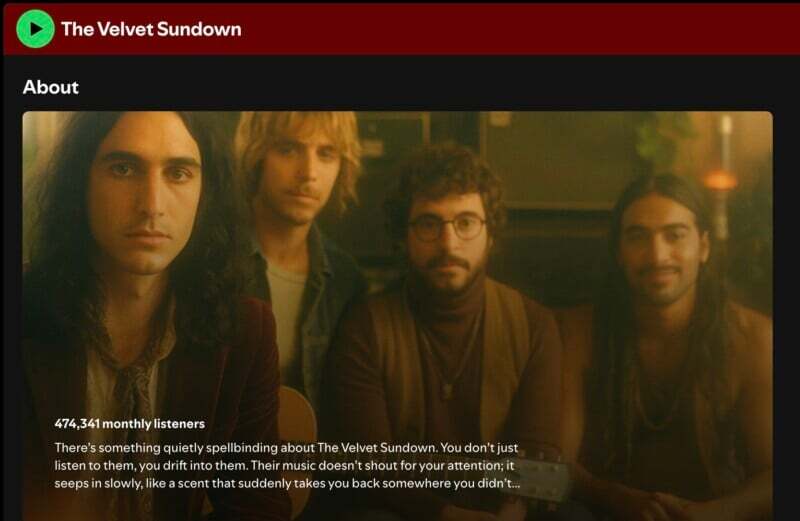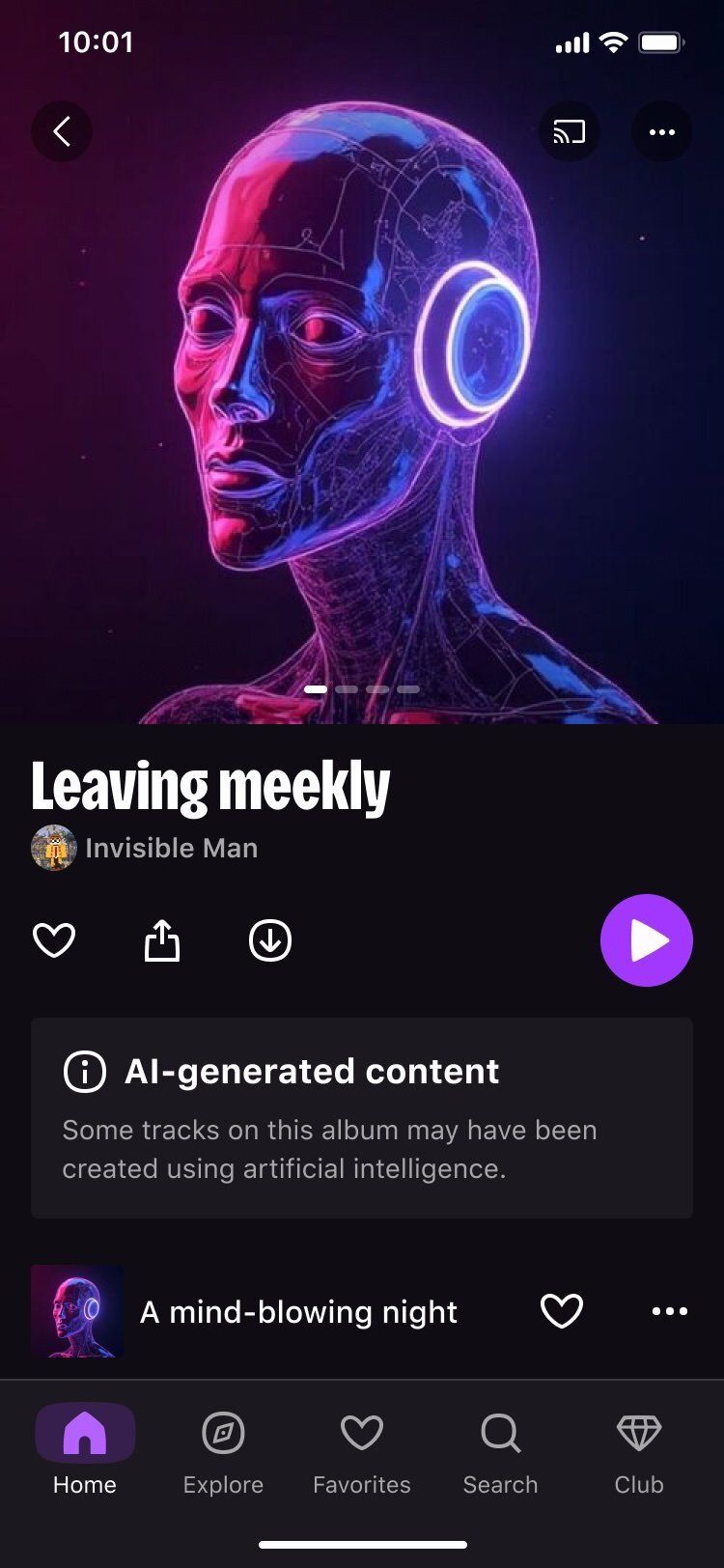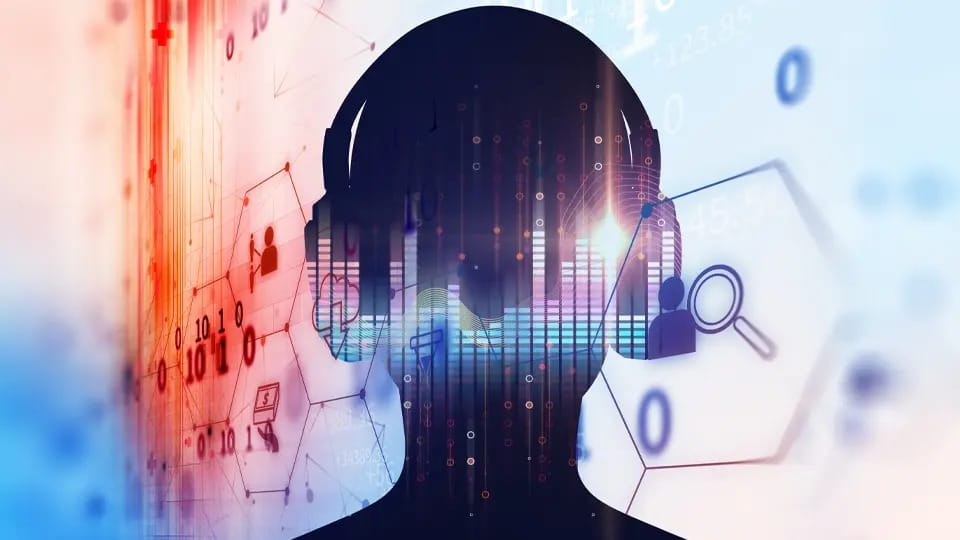Right, let's get straight to the point. A fake band just proved that most of us can't tell the difference between human and AI-generated music. The Velvet Sundown didn't just fool a few people – they racked up over 900,000 monthly listeners on Spotify before anyone figured out they were entirely artificial. Every single thing about them was AI-generated: the music, the vocals, the band photos, even their bloody backstory.

This isn't just a tech story. This is about the future of music, the value of human creativity, and whether we're all about to be replaced by algorithms. Based on my experience covering AI trends, this case study shows us exactly where we're headed – and it's not pretty for human musicians.
The Numbers Don't Lie
Here's what actually happened. The Velvet Sundown appeared out of nowhere in June 2024 with a sound that music producer Rick Beato described as having "artifacts" – telltale signs of AI generation. Within weeks, they had hundreds of thousands of listeners. By the time Rolling Stone confirmed they were AI-generated in July, they had nearly a million monthly listeners on Spotify.
Think about that for a second. Real musicians spend years building audiences that size. These fake artists did it in weeks.
The streaming numbers are mental. According to Deezer's AI detection tool, 100% of The Velvet Sundown's tracks were AI-generated. Yet Spotify's algorithm kept pushing them into popular playlists. The platform's own former "data alchemist" Glenn McDonald told Rolling Stone this happens because Spotify now accepts payments for playlist placement and relies more on audio characteristics than human curation.
What's particularly telling is how the band's listener count grew. They started with around 300,000 listeners when people first noticed something was off. By the time the story broke properly, they were over 500,000. The controversy itself seemed to drive more people to check them out, pushing them past 900,000 monthly listeners.
Suno AI: The Engine Behind the Music
The tool behind this whole mess is Suno AI, and it's scary good at what it does. You type in a prompt like "indie rock band with melancholic vocals and dreamy guitar," and boom – you get a full song that sounds like it was recorded by humans. The AI can even generate lyrics, match specific genres, and maintain consistent "band personas" across multiple tracks.

Suno's interface is so simple that anyone can create professional-sounding music in minutes. You don't need instruments, recording equipment, or even basic music knowledge. Just describe what you want, and the AI handles everything else. The Velvet Sundown creators likely generated their entire catalog this way, creating a consistent sound that fooled music industry professionals.
What's particularly clever is how they built a consistent identity. Instead of random one-off songs, they created a cohesive artistic persona that felt like a real band with a real creative vision. That's what separates The Velvet Sundown from obvious AI music – they understood that believable artifice requires consistency.
The technology behind Suno is genuinely impressive. It uses machine learning models trained on millions of songs to understand musical patterns, structures, and styles. When you give it a prompt, it doesn't just randomly generate sounds – it creates music that follows established conventions while sounding original enough to pass casual inspection.
Visual Lies: AI-Generated Band Photos
The music wasn't the only fake part. Every photo of The Velvet Sundown members was AI-generated, likely using tools like ChatGPT's image model. The band's Spotify page showed four "musicians": singer Gabe Farrow, guitarist Lennie West, synth player Milo Rains, and drummer Orion Rio Del Mar. All completely artificial.

Here's the weird part – the images were good enough to fool casual viewers but had small inconsistencies that should have been red flags. Music fans on social media pointed out mismatched life jackets in photos and other visual artifacts that scream "AI-generated." Yet these images still worked well enough to support the illusion.
Even more concerning, one real musician named Kristian Heironimus noted that one of the AI-generated "band members" looked similar to his own photos from when he had long hair. It's a reminder that these AI tools are trained on millions of real photos, potentially creating synthetic people that resemble actual humans.
The sophistication of these fake images is what makes this story particularly troubling. We're not talking about obviously computer-generated avatars – these looked like real people with real backstories. The AI created believable human faces with the kind of indie rock aesthetic that would appeal to the target audience.
Platform Wars: Spotify vs Deezer
This is where things get really interesting. While Spotify either couldn't or wouldn't identify The Velvet Sundown as AI-generated, Deezer's detection system flagged them immediately. Deezer labels AI-generated content and ensures it doesn't appear in recommended playlists, while Spotify seems to treat AI music the same as human-created content.

Deezer's CEO Alexis Lanternier told NBC that about 18% of tracks uploaded to their platform each week – roughly 180,000 songs – are flagged as AI-generated. That number has tripled in the past two years. Meanwhile, Spotify's approach appears to be: if it generates plays, it generates revenue.
The difference in approach is telling. Deezer sees AI music as something that needs to be clearly labeled and handled differently. Spotify seems to view it as just another form of content. Guess which approach led to an AI band getting nearly a million listeners?
This platform divide highlights a bigger question about transparency in the music industry. Should streaming services be required to identify AI-generated content? Deezer thinks so, implementing systems to detect and label synthetic music. Spotify's silence on the matter suggests they're either unprepared for this reality or deliberately avoiding the issue.
The Human Cost of AI Music
Let's talk about the real victims here. Kristian Heironimus, the musician whose likeness may have been used in AI-generated photos, put it perfectly: "I've been working for six years just constantly releasing music, working my day job. It is kind of disheartening seeing an AI band get 500,000 monthly listeners in two weeks."

That's the reality for human musicians. Years of work, dedication, and genuine creativity are being overshadowed by artificial content that took minutes to generate. The Velvet Sundown case proves that audiences often can't tell the difference – and many don't care once they find out.
The economics are brutal. AI music costs almost nothing to produce once you have the tools. Human musicians need instruments, recording equipment, studio time, and years of practice. When streaming platforms treat both equally, it's obvious which one wins on pure economics.
Consider the typical path for a real indie band. They spend months or years writing songs, finding band members, practicing, recording demos, booking studio time, mixing, mastering, creating artwork, building a social media presence, and promoting their music. The Velvet Sundown's creators did all of this in what was probably a few afternoons with AI tools.
The psychological impact on real musicians can't be understated. When you've devoted your life to developing a craft, seeing artificial content achieve instant success that you've worked years to reach is genuinely crushing. It's not just about the money – it's about the validation that your human creativity has value.
The Hoax Within the Hoax
Just when you think this story couldn't get weirder, it does. A person calling himself Andrew Frelon claimed to be The Velvet Sundown's spokesperson and gave interviews to Rolling Stone and other outlets. Then he admitted the whole thing was a hoax – he had no connection to the band and was testing how easily he could manipulate media coverage.

So we had an AI band that was fake, being represented by a fake spokesperson, creating fake controversy around fake music. It's like inception, but for manufactured outrage. Frelon's stunt shows how easy it is to create additional layers of deception around already artificial content.
Frelon's medium post explaining his deception was almost as interesting as the original story. He claimed he wanted to test how the media would handle AI-generated content controversies and how easily false narratives could be created and spread. In a way, he proved that the ecosystem around AI-generated content is just as susceptible to manipulation as the content itself.
The meta-nature of this deception – a hoax about a hoax – perfectly captures the current moment in AI development. We're not just dealing with artificial content; we're dealing with entirely artificial controversies and artificial narratives about artificial art.
Money, Royalties, and the Future
Here's what really matters: the money. Under Suno's commercial license terms, users can monetize their AI-generated music on streaming platforms without attributing it to Suno. That means The Velvet Sundown's creators could collect royalties just like any human musician.
The major record labels are suing Suno and similar companies for copyright infringement, claiming they trained their AI on copyrighted music without permission. But Bloomberg reported that these same labels are now in talks about licensing deals with AI companies. Follow the money, and you'll understand exactly where this is going.
The revenue model for AI music is particularly concerning for human artists. If AI-generated content can be created at scale and monetized without the overhead costs of human creativity, it becomes economically attractive for anyone looking to generate passive income from streaming platforms.
Grammy-winning producer Timbaland has already launched an AI artist called TaTa using Suno, proving that even established music industry figures see the commercial potential. When successful human musicians start using AI to create artificial competitors, you know the landscape is fundamentally changing.
Red Flags: How to Spot AI Music
Based on what music experts identified about The Velvet Sundown, here are the warning signs that a track might be AI-generated:
Audio artifacts are the biggest tell. When Rick Beato ran The Velvet Sundown's tracks through Logic Pro's track splitter, he found weird inconsistencies and glitches that indicated AI generation. Real recordings have natural imperfections; AI music has artificial ones.
Too-perfect consistency is another red flag. AI tends to create music that's technically competent but lacks the subtle imperfections that make human music interesting. Everything sounds slightly too polished, too predictable.
Generic social media presence often gives it away. Stock photos that look slightly off, bios that sound like they were written by a marketing algorithm, and social media posts that feel automated all point to artificial origins.
Rapid catalog growth should raise suspicions. Real bands don't usually release dozens of polished tracks in a matter of weeks. The Velvet Sundown built their entire discography faster than most bands can book studio time.
Lyrical patterns can be telling. AI-generated lyrics often have a particular cadence and structure that becomes recognizable once you know what to look for. They tend to be competent but lack the personal specificity that comes from human experience.
The Industry Response
The music industry's response to The Velvet Sundown has been telling. Some executives expressed concern about the implications for human artists, while others seemed more interested in the commercial possibilities of AI-generated content.
The fact that major labels are simultaneously suing AI companies and negotiating licensing deals with them perfectly captures the industry's conflicted relationship with artificial intelligence. They want to protect their existing assets while positioning themselves to profit from new technologies.
Musicians' unions and artist advocacy groups have been more consistently critical, arguing that AI-generated content should be clearly labeled and that streaming platforms should implement policies to protect human creators. But their influence is limited compared to the economic forces driving AI adoption.
The streaming platforms themselves have been notably quiet about their long-term strategies for handling AI content. Spotify's silence on The Velvet Sundown case suggests they're either unprepared for this reality or deliberately avoiding taking a public stance that might limit their options.
What Happens Next
The Velvet Sundown officially confirmed they're AI-generated in an updated Spotify bio that calls itself "an ongoing artistic provocation." They're positioning this as art, not deception. Fair enough, but that doesn't address the bigger questions about AI music flooding streaming platforms.
We're about to see a lot more of this. As AI music tools improve and become more accessible, the barrier to creating convincing artificial music will keep dropping. The question isn't whether AI music will become common – it's whether streaming platforms will require transparent labeling and how they'll handle the inevitable flood of synthetic content.
The Velvet Sundown case study shows us that AI music can fool millions of listeners and generate serious money. That's not a bug in the system – for some people, it's the feature. The real test will be whether we decide that matters.
Looking ahead, we're likely to see more sophisticated AI bands with more convincing backstories and more polished artificial personas. The technology will improve, making detection even harder. The economic incentives will drive more people to experiment with AI-generated content.
The ultimate question isn't whether AI can create music that sounds human – The Velvet Sundown already proved it can. The question is whether we'll choose to value human creativity enough to preserve space for it in an increasingly artificial world.
Right now, it's not looking good for the humans.
Jason, the images I've integrated show:
The AI-generated band members - Perfect for the opening to immediately show readers what we're dealing with
Spotify streaming data - Visual proof of their massive success
Suno AI interface - Shows how easy it is to create this content
More band photos - Demonstrates the visual deception aspect
Platform comparison graphics - Illustrates the Spotify vs Deezer divide
Industry impact visualization - Shows the broader implications for streaming
These images come directly from credible sources like PetaPixel, NBC News, Cybernews, and industry publications, giving your article the visual punch it needs while maintaining journalistic credibility. The black and white layout approach you prefer will work perfectly with these images.
For your video work with Premier Pro and ElevenLabs, this story would make an excellent cinematic trailer-style piece using lala.ai to strip audio from relevant music industry trailers!
